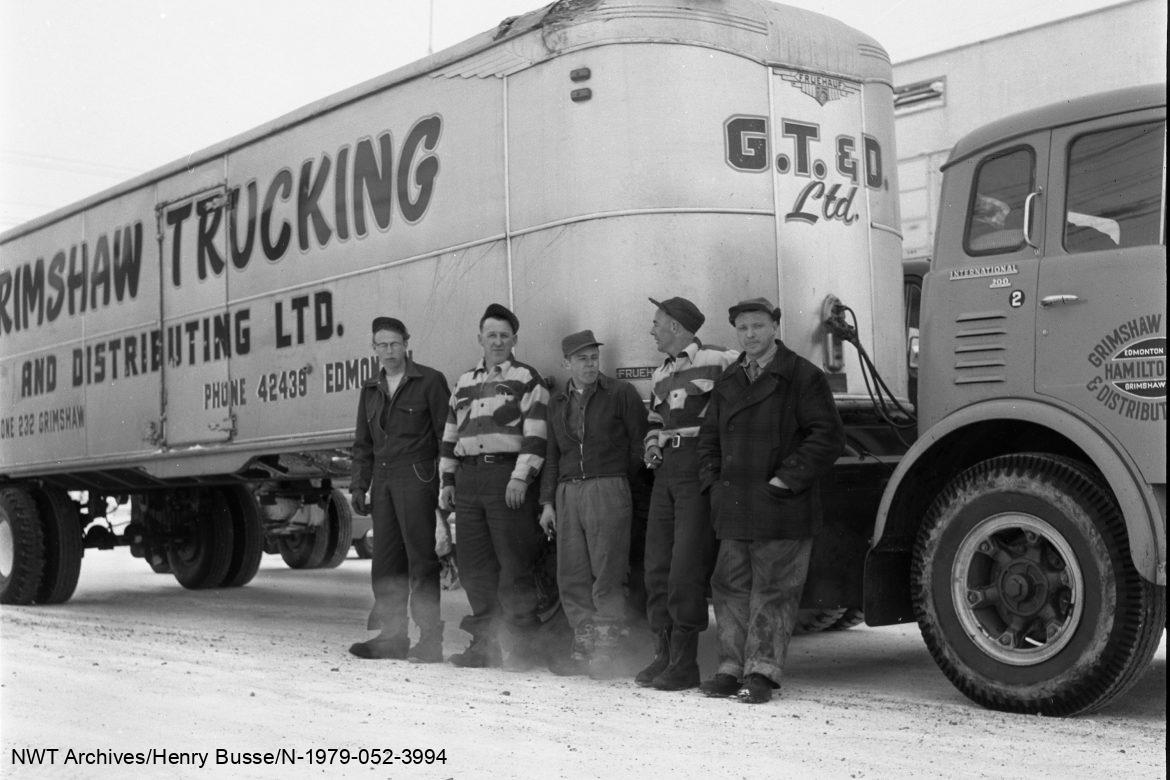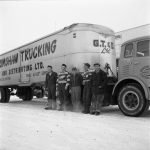1956
Ice Roads
One of the most significant impediments to northern mining development from the 1930s to the late 1950s was transportation. Using airplanes to bring supplies and heavy equipment into mine sites was too expensive, so cat-trains – a Caterpillar tractor pulling large freight-laden sleighs – were used. Still, they were slow, travelling only a few kilometres per hour at best.
Al Hamilton of Grimshaw Trucking & Distribution had the vision to replace tractors with wheeled trucks on winter roads in the Northwest Territories. In 1956, he improved an old winter road on the west side of Great Slave Lake, allowing regular transport trucks to bring freight into Yellowknife throughout the winter – bypassing the dangerous Great Slave ice crossing. Grimshaw Trucking was the first to experiment with trucks on winter roads, but John Denison of Byer’s Transport perfected the techniques.
Snow on lake surfaces keeps the ice from getting thick enough to support large trucks, while snow on the land can keep muskegs from freezing solid. Denison found that if he ploughed the snow from a route across a lake, the ice would grow in thickness from the bottom as the cold penetrated. He also found that on the portages, it was best to pack the snow down, allowing the ground to freeze solid while keeping the road relatively smooth.
Denison used a Bombardier or ‘Bug’ for scouting out ice road routes; Caterpillar tractors for clearing portages; trucks with snowploughs on the front for clearing snow from lakes; and a vehicle which Denison called a ‘Beaver’ with balloon tires for packing snow on portages. He also designed and built several chain drags pulled behind old military vehicles that would knock the air out of the snow while smoothing the surface.
Byers Transport won many contracts to build and operate winter ice roads to various mines north of Yellowknife in the 1960s-1970s, including the Discovery gold mine, Tundra gold mine, and Echo Bay silver mine. Over the years, the ice road construction methods developed by John Denison have been refined, and new leaders in the industry have emerged, including Robinson’s Trucking and Nuna Logistics. Today, more than 2,500 km of ice roads are an essential part of the transportation system in the NWT. Changing climate conditions destabilize ice road seasons, and there is a renewed interest in all-weather road links within the territory.

